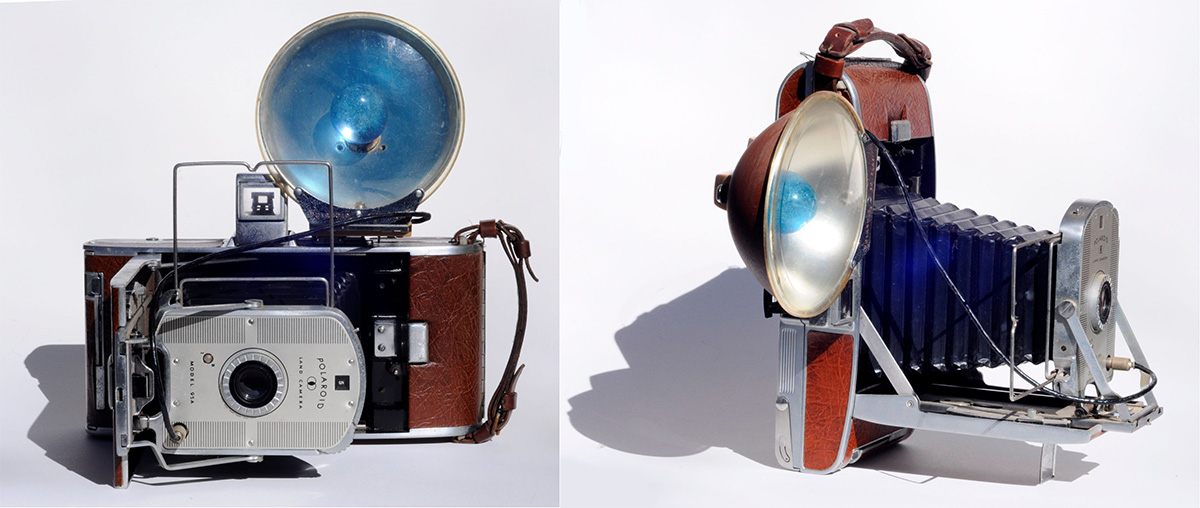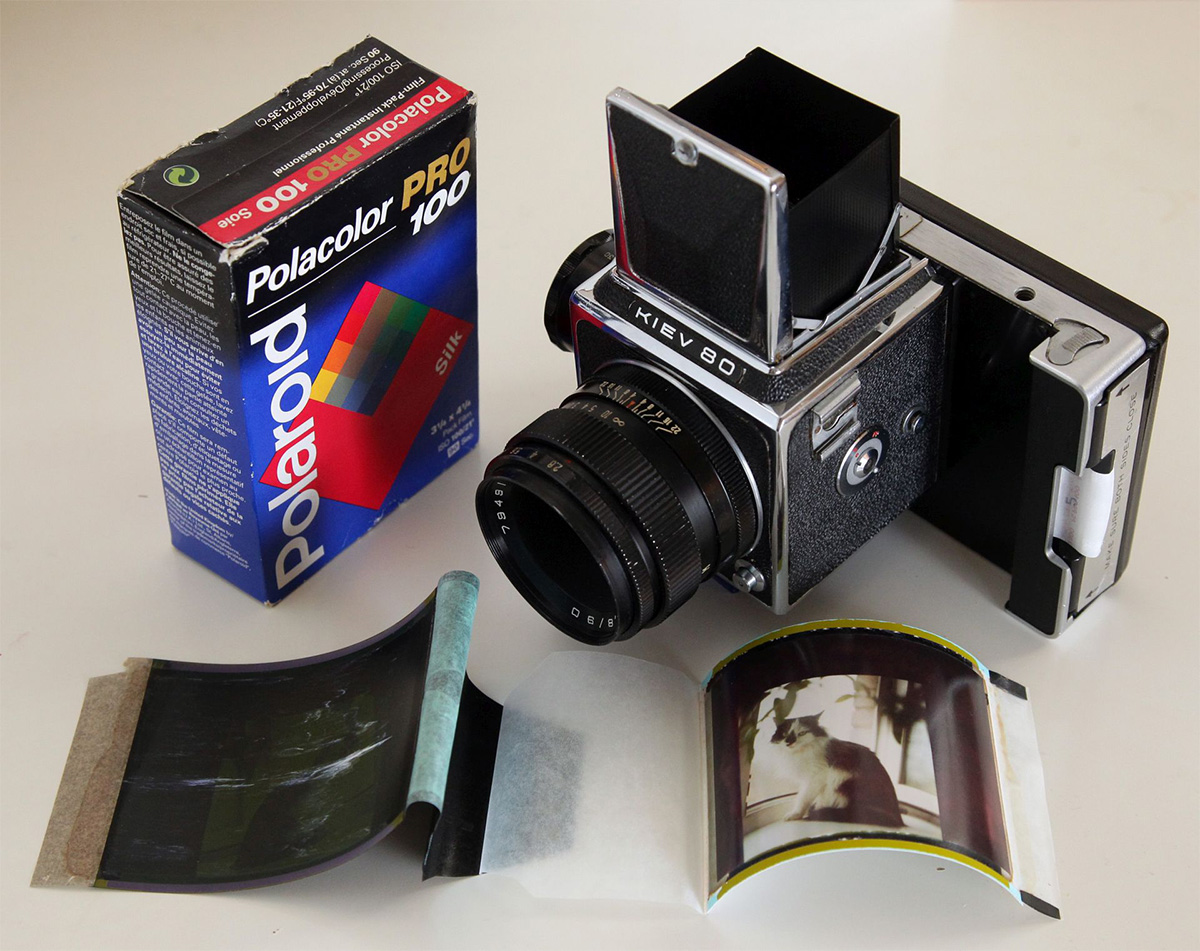
The History of Photography - Part 6:
The Implementation of the Instant Camera
Instant cameras never really went out of style, but in the last couple of years they have experienced a bit of a revival. When did, though, this little miracle contraption of sorts come about, how does it work, and why do we just call them all “Polaroid cameras?” We’ll cover that and much more in the sixth part of our series.
Everything Begins with a Girl
How many other impactful discoveries also began with a small child? The daughter of the physicist Edwin Herbert Land asked him the very questions that would prompt him to begin developing the instant camera: “Why do I have to wait so long for my photos?” She didn’t want to have to wait for them to develop, but instead to have them immediately. Mr. Land then took his idea of an instant camera to banks and investors, but his idea landed on deaf ears. Why should anyone want to have their photos instantly? Thus, Edwin Land took matters into his own hands.
Small Transparency, Big Effect
In 1933, Edwin Land developed special polarising transparencies that were based on a stretched polymer transparency with diffused iodine. In the same year, he applied for a patent for this kind of transparency, perhaps because he had an inkling of how ground-breaking this discovery could turn out to be. With his special transparencies in hand, Edwin Land slowly went into business for himself and even used his new technology in sunglasses. These transparencies received a name that would later be used to refer to all instant cameras in general: Polaroid. Using the name “Polaroid” to refer to all instant cameras, therefore, is technically incorrect since Polaroid is a brand name and would not technically include instant cameras produced by other manufacturers.

The Polaroid Brand on the Rise
On 21 February 1947, the technology was developed enough to be applied in a folding camera. This kind of camera was already invented some years earlier, but it was well suited for Polaroid film thanks to the way the camera is structured. Edwin Land then developed his own folding camera especially for his film which he gave the very original name “Land Camera.” One year later, the first Polaroid camera was sold in Boston.
For many years, Polaroid was the sole distributor of instant cameras until other companies finally experimented with the technology. During this time, Edwin Land was making one innovation after the other with his company. In 1963, thanks to extensive research and development efforts, the first “1-minute colour film” in the world - Polacolor - was introduced.

Working Mechanisms of an Instant Camera
Until the time of Polaroid transparencies, it was normal to equip cameras with film rolls. Now, instead, special sheets of paper were stuck in the camera whose surfaces looked like that of negative film. Since these sheets are especially sensitive to light, it’s especially important to protect them from daylight.
Besides these transparencies, the photographic material also has the necessary chemicals required to develop a photograph in the form of a paste. When removing the image unit, the chemicals between the negative and positive mix and distribute either silver particles or dyes depending on if the film is black and white or colour. These are transferred to the positive of the image and separate from the negative after a short developing time.
Twenty-five years later, the integral film method mostly replaced this developing process since it is more effective and reliable. In this method, all of the processes we mentioned above occur in a closed image unit. The exposure is performed via a mirror through the transparent positive and a dye contained within protects the image unit from light.

Polaroid, Kodak, Fuji: the Competition Doesn’t Let Up
Besides Polaroid, there were some other companies worth mentioning who also tried their hands at manufacturing instant cameras. Two of them are still well known today.
One of these two companies is Kodak, the company that presented its first instant camera models from the EK-series at the Photokina in 1976. These cameras still had a very simple structure and the photographer had to use a sort of crank to prompt the image to be ejected from the camera. Kodak kept up well with the competition till the mid 1980’s, but then ran into problems due to its legal dispute with Polaroid. Polaroid sued Kodak for patent infringement and Kodak eventually lost the case. As a result of the lawsuit, Kodak halted production and distribution of their instant cameras in 1985.
Fuji has been very successful selling their instant cameras in recent years. Especially their Instax product line has gained in popularity and is well received by younger generations since these cameras combine quality with simplicity. Also worth mentioning is that the film used in these cameras features a Polaroid logo, which is only made possible since Polaroid’s patent expired and they no longer have a claim on the functionality of Polaroid film. Something also relevant to this is the fact that Polaroid had to file for bankruptcy in 2008 and thus had to halt production and distribution of their instant cameras.

Uses of Instant Cameras
Instant cameras have begun to regain their once-lost popularity in recent years. Nowadays they are used for both professional and personal purposes:
- Passport photo booth
- Small-time photographers who need their pictures faster than if they had used conventional film
- Photo journalists can send several photos to the editorial office ahead of time while waiting for their conventional film to be developed
- Photographers who sell their photographs immediately to customers on the spot, in theme parks for instance
- For medical or legal documentation (e.g. doctor’s office, scene of an accident, crime scene)
With the emergence of digital photography, instant cameras became somewhat a thing of the past. Today, however, they’ve once again become popular thanks to their retro feel and degree of nostalgia. Things like instant photo printers are also becoming more popular at parties. These operate based on the same principles as Polaroid photos, but are mostly used with digital cameras.
This kind of photography does come with its downsides, however. For one, the instant photographs tend to be a bit more expensive than “traditional” photos. Also, some ecological aspects of instant cameras are criticised. It’s a lot more laborious to produce this kind of film compared to other film, there’s a lot of plastic waste produced and it consumes batteries. Furthermore, the durability of the prints is often criticised.
Polaroid Is Not Dead
Instant cameras have their work cut out for them to try to hold their own against digital cameras. There are still many people out there who refuse to let Polaroid film die out. After Polaroid had to halt production of their film in 2008, the Impossible Project didn’t hesitate for long and they bought the company shortly before they closed their doors. The idea was at first a mammoth task: the production machines were already dismantled, the members of the Impossible Project had no clue about the production of instant images, and the supply chains were already broken. They pretty much had to start from the beginning. This didn’t discourage the members of the Impossible Project and they immediately gathered together chemists, engineers, and photographers who brought Polaroid film back to life.
Thanks to the valiant efforts of this project, today we can again enjoy high-quality Polaroid film. The Impossible Project also fixes up old cameras of this classic company in order for people to get the real Polaroid experience.
In der 1840er Jahren ist es kaum möglich gewesen, Kopien von Fotografien anzufertigen. Dieses gelang erst mit dem 1851 durch Frederick Scott Archer entwickelten «Nassen Kollodiumverfahren». Es vereinte gute Bildqualität mit Kosteneffizienz und löste die Daguerreotypie und die Kalotypie aus den 1840er Jahren ab. Das entstandene Negativ konnte problemlos umkopiert und so vervielfältigt werden. Allerdings war das Fotografieren durch die Selbstpräparation der lichtempfindlichen Platte kurz vor der Belichtung und der sofortigen Entwicklung im Anschluss mit einem erheblichen Aufwand verbunden. Wirklich mobil waren die Fotografen so nicht – die Ausrüstung wog zum Teil mehr als 100 Kilogramm. Ab dem Jahr 1871 wurde das Fotografieren auf Gelatine-Trockenplatten immer populärer. Bereits 1875 wurden die Trockenplatten industriell hergestellt und erfreuten sich vor allem bei Amateurfotografen großer Beliebtheit. Ihr Vorteil bestand in der guten Lagerfähigkeit und dem geringeren Kaufpreis gegenüber den Nassplatten, was das Fotografieren massentauglicher machte.
Durant les années 1990, le processus de numérisation a énormément progressé. Vous pouvez retrouver toutes les informations sur les développements et innovations de cette époques dans notre partie 7 de l’histoire de la photographie.
